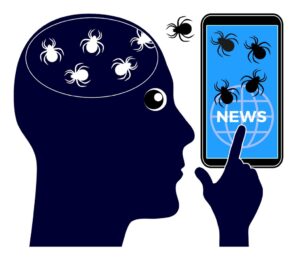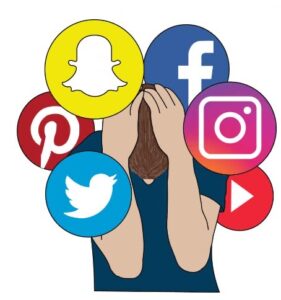Continua la collaborazione tra il liceo linguistico Cattaneo Dall'Aglio e Redacon tramite la rubrica Speakeasy, curata direttamente dagli studenti.

In this article we will explore the main effects of social media on our communication skills and the dynamics of our real-life relationships.
What is a means of social communication?
It is a tool that allows us to communicate within a digital, virtual society, but populated by real people.
In fact, social + media, from the Latin “medium” meaning “means” adopted with the connotation of a means of communication.
Given that humans are naturally social beings, as the philosopher Aristotle rightly noted, it's not surprising that tools like these have been created to establish connections.
One of the primary advantages of social media is the ability to connect with people worldwide and expand one's social network.
Through platforms like Facebook, Instagram, and Twitter, it's possible to establish and maintain relationships with friends, family, and people with common interests, even at a distance. This global connectivity has made the world more accessible and facilitated the exchange of ideas and information.
Before all the known applications that everyone has on their phones, there were those that marked the beginning of this era, for example the first social networking site is believed to be SixDegrees.com (1997). It allowed users to create profiles and list friends. However, it shut down in 2001.
Social media has also revolutionized communication, allowing for the rapid dissemination of news and the ability to interact directly with influencers, public figures, and companies.
From an economic perspective, social media offers new opportunities for marketing and promoting products and services. Companies can reach a broader audience, enhance brand visibility, and directly engage with customers. This has opened up new business possibilities and contributed to the growth of digital economies.
These platforms enable artists, photographers, designers, and other creatives to share their work with a global audience. They can showcase their visual creations, such as paintings, photographs, fashion designs, graphic art, and more. Engaging with diverse perspectives on social media can expand one's knowledge and understanding of the world.
And it simply allows the rapid dissemination of news, information, and knowledge on a global scale.
However, like anything else, such globalization has several negative aspects. All of them directly impact our lives. And despite how much easier and better life has become, it's essential to mention the other side of the coin.
The first thing is cyberbullying. The meaning of cyberbullying is rather straightforward: it's a form of bullying that exists online, in the virtual world. The bully, or cyberbully, aims to target their victim with various insults, intending to make them feel vulnerable. Most often, cyberbullying affects young people, much like traditional bullying. However, it's not uncommon to identify forms of cyberbullying among adults as well.

Social media platforms often prioritize brevity and immediacy. This emphasis on concise messages and quick responses can lead to superficial interactions. In the pursuit of quantity over quality, we may find ourselves surrounded by an abundance of acquaintances but lacking in deep, meaningful connections.
The constant stream of updates and highlights on social media can give rise to the "Fear of Missing Out" (FOMO). It's easy to feel inadequate or left out when viewing the carefully curated moments shared by others, affecting self-esteem and well-being.
Ultimately, it's in our hands to wield this tool wisely. Let us strive for a harmonious balance between the digital and the real, where social media enhances, rather than hinders, our communication skills and the authenticity of our real-life relationships. In this delicate dance between the virtual and the tangible, let our steps be guided by the wisdom to harness the benefits while guarding against the pitfalls.
Tetiana Haidash & Romina Ndoci
Globalizzazione:
Impatto dei Social Media nella Nostra Vita
Nell'era digitale, i social media sono diventati parte integrante della nostra vita quotidiana. Hanno trasformato il modo in cui comunichiamo, ci connettiamo e condividiamo informazioni. In questo articolo esploreremo gli effetti principali dei social media sulle nostre abilità comunicative e sulla dinamica delle nostre relazioni nella vita reale.
Cos'è un mezzo di comunicazione sociale?
È uno strumento che ci consente di comunicare all'interno di una società digitale, virtuale, ma popolata da persone reali. Infatti, social + media, dal latino "medium" che significa "mezzo" adottato con la connotazione di un mezzo di comunicazione.
Dato che gli esseri umani sono naturalmente creature sociali, come giustamente ha notato il filosofo Aristotele, non sorprende che siano stati creati strumenti come questi per stabilire connessioni.
Uno dei principali vantaggi dei social media è la capacità di connettersi con persone in tutto il mondo e ampliare il proprio network sociale.
Attraverso piattaforme come Facebook, Instagram e Twitter, è possibile stabilire e mantenere relazioni con amici, familiari e persone con interessi comuni, anche a distanza. Questa connettività globale ha reso il mondo più accessibile e facilitato lo scambio di idee e informazioni.
Prima di tutte le applicazioni conosciute che tutti hanno sui loro telefoni, c'erano quelle che hanno segnato l'inizio di quest'era, ad esempio il primo sito di social networking si ritiene sia stato SixDegrees.com (1997). Consentiva agli utenti di creare profili e elencare amici. Tuttavia, chiuse nel 2001.
I social media hanno anche rivoluzionato la comunicazione, consentendo la rapida diffusione delle notizie e la possibilità di interagire direttamente con influencer, personaggi pubblici e aziende.
Dal punto di vista economico, i social media offrono nuove opportunità per il marketing e la promozione di prodotti e servizi. Le aziende possono raggiungere un pubblico più ampio, aumentare la visibilità del marchio e interagire direttamente con i clienti. Ciò ha aperto nuove possibilità commerciali e contribuito alla crescita delle economie digitali.
Queste piattaforme consentono ad artisti, fotografi, designer e altri creativi di condividere il loro lavoro con un pubblico globale. Possono mostrare le loro creazioni visive, come dipinti, fotografie, design di moda, grafica e altro ancora. Interagire con prospettive diverse sui social media può ampliare la conoscenza e la comprensione del mondo. E semplicemente consente la rapida diffusione di notizie, informazioni e conoscenze su scala globale.
Tuttavia, come qualsiasi altra cosa, tale globalizzazione presenta diversi aspetti negativi. Tutti questi impattano direttamente sulle nostre vite. E nonostante quanto sia diventata più facile e migliore la vita, è essenziale menzionare anche il lato negativo della medaglia.
La prima cosa è il cyberbullismo. Il significato del cyberbullismo è piuttosto semplice: è una forma di bullismo che esiste online, nel mondo virtuale. Il bullo, o cyberbullo, mira a prendere di mira la loro vittima con vari insulti, con l'intenzione di farli sentire vulnerabili. Molto spesso, il cyberbullismo colpisce i giovani, proprio come il bullismo tradizionale. Tuttavia, non è raro identificare forme di cyberbullismo anche tra gli adulti.
Il cyberbullismo comprende azioni aggressive compiute attraverso SMS, chat, messaggistica, chiamate telefoniche, forum, siti web e altro. A volte, il cyberbullismo può persino trasformarsi in bullismo nella vita reale, con confronti di persona che possono sfociare in episodi di violenza.
Le piattaforme di social media spesso privilegiano la brevità e l'immediatezza. Questa enfasi su messaggi concisi e risposte rapide può portare a interazioni superficiali. Nella ricerca della quantità rispetto alla qualità, potremmo trovarci circondati da un'abbondanza di conoscenze ma carenti di connessioni profonde e significative.
Il costante flusso di aggiornamenti e momenti salienti sui social media può dare origine alla "paura di perdere qualcosa" (FOMO). È facile sentirsi inadeguati o esclusi quando si osservano i momenti accuratamente curati condivisi dagli altri, influenzando l'autostima e il benessere.
In ultima analisi, è nelle nostre mani utilizzare questo strumento saggiamente. Cerchiamo un equilibrio armonioso tra il digitale e il reale, dove i social media migliorano, piuttosto che ostacolare, le nostre abilità comunicative e l'autenticità delle nostre relazioni nella vita reale. In questa delicata danza tra il virtuale e il tangibile, permettiamo che i nostri passi siano guidati dalla saggezza per sfruttare i benefici, proteggendoci contro gli svantaggi.
Tetiana & Romina







